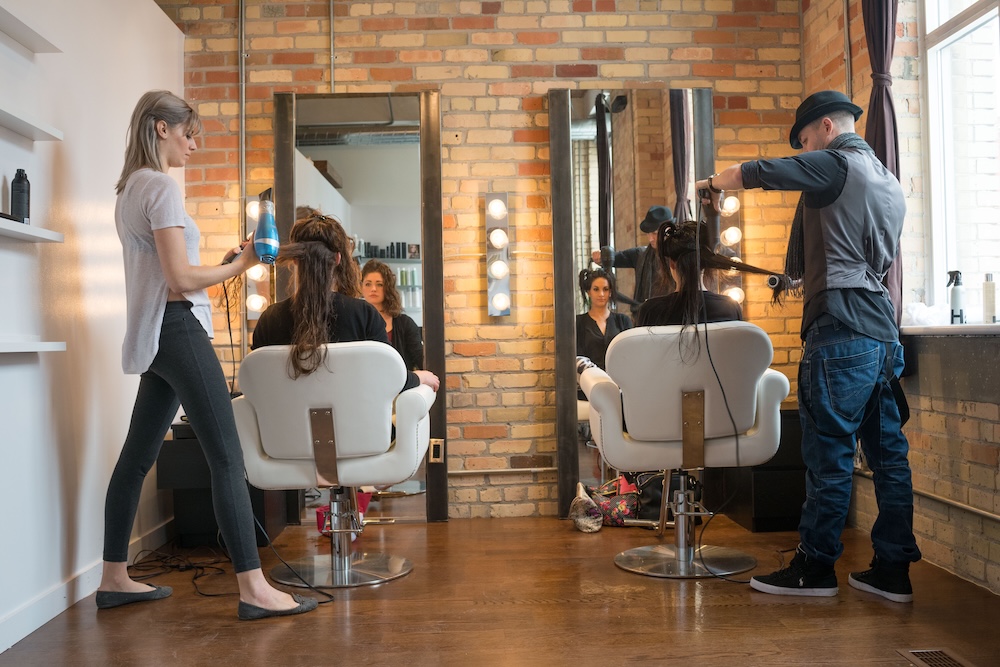Hairdressers, beauty therapists, make-up artists, nail technicians – they all share one thing in common. They’re all experts at helping people ‘glow up’ how they look.
But when it comes to business tech, this thriving retail sub-sector can feel overlooked. Often operating out of bijou premises where space is at a premium, your average salon has little call (or space) for more than one POS terminal. Popular retail solutions like self-service kiosks seem like an extravagance.
But that doesn’t mean that salon owners have to miss out on the benefits of cutting-edge POS tech. There’s one pint-sized device in particular that oozes potential for glamming up the salon experience in innovative and exciting ways.
We’re talking about mobile POS tablets – that is, touchscreen tablets customized for use in customer-facing environments. And as we’re about to explain, there are lots of ways salon owners can put them to great use.
Show Images to Help Customers Choose What They Want
Hair and beauty are very visual sectors. They’re all about helping people feel confident in how they look, after all. But sometimes it can be tough for customers to communicate clearly exactly how they want to look. We’ve all been there. We sit down for a haircut, the hairdresser asks us what we want, and we spend what feels like an eternity trying in vain to describe the look that’s clear in our own heads, but seems beyond the power of words.
Having a tablet to hand offers an ideal solution. You can let the customer scroll through a gallery of styles to help them pick what they want.
Confirm Choices with a Virtual Try-On
Picking out a hairstyle or nail design or set of lashes from a gallery of pictures definitely helps people overcome the descriptive block. But the dreaded follow-up question for any beautician or stylist is, what do you think it will look like on me?
With the wonders of AR technology, you don’t have to risk an opinion. Using a tablet’s device camera and a suitable AR app, you can show the client by virtually superimposing the product onto a live image of them. Pioneered in fashion retail where ‘virtual dressing rooms’ have proven highly popular, this is an excellent way of using the latest technology to add something new to the salon experience.
‘Stream’ the Process from Different Angles
Have you ever wished you could see what your hairdresser is doing to the back of your head during a cut, rather than waiting for them to hold a mirror up at the very end? With a simple lapel camera worn by the stylist and a tablet screen, you can do just that, ‘streaming’ the whole process (just for the customer’s eyes, of course) from brand new angles.
As well as hairdressers, this is something tattoo artists could successfully use. As with AR virtual try-ons, it’s all about adding new depth to the experience, and making the customer feel involved and in control of the whole process.
Give Customers Something to Do to Pass the Time
The casual chat is a legendary part of the hair and beauty salon experience. But as all beauticians and hairdressers know, some customers are more keen on small talk than others. For some, attempts at conversation can actually detract from the experience.
Having a screen handy can ease the awkwardness. POS tablets can double up as a source of entertainment for customers, particularly welcome for passing the time during longer procedures. And with one tablet per station, you can give customers control over what to watch.
Make Payments Easy
Finally, as their name suggests, mobile POS tablets are designed first and foremost as point-of-sale solutions – that is, as a means of processing payments. And their big advantage in that regard is that they allow businesses to take payment to the customer, rather than asking them to wait at a till.
In a hair or beauty salon, this makes the whole transaction process that much easier and more convenient. It means customers can pay right there from the chair or bench, rather than having to wait at the till while staff ring through the transaction. And replacing fixed point terminals with tablets can save valuable space for the business, too – perhaps even making enough room to accommodate an extra customer to two.
